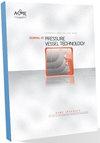Artificial Neural Network Technique For Seismic Fragility Analysis Of A Storage Tank Supported By Multi-Storey Frame
IF 1.4
4区 工程技术
Q4 ENGINEERING, MECHANICAL
Journal of Pressure Vessel Technology-Transactions of the Asme
Pub Date : 2023-08-24
DOI:10.1115/1.4063242
引用次数: 0
Abstract
Fragility function, which defines the conditional probability of exceeding a limit state given an intensity measure (IM) of the earthquake, is an essential ingredient of modern approaches like the performance-based earthquake engineering methodology. However, the generation of such curves generally entails a high computational effort to account for epistemic and aleatory uncertainties associated with structural analysis and seismic load. Moreover, a certain probability function, such as the log-normal distribution, is usually assumed in order to carry out the conditional probability of failure of a structure, without any prior information on the correct probability distribution. In this paper, an artificial neural network (ANN) model is proposed to carry out fragility curves in order to avoid the aforementioned problems. In this respect, this paper investigates the following aspects: (i) implementation of an efficient algorithm to select proper seismic intensity measures as inputs for ANN, (ii) derivation of surrogate models by using the ANN techniques, (iii) computation of fragility curves by means Monte Carlo Simulations and (iv) validation phase.多层框架储罐地震易损性分析的人工神经网络技术
脆性函数定义了给定地震烈度(IM)时超过极限状态的条件概率,是基于性能的地震工程方法论等现代方法的重要组成部分。然而,这种曲线的生成通常需要大量的计算工作,以解释与结构分析和地震荷载相关的认知和不确定性。此外,为了计算结构的条件失效概率,通常假设一定的概率函数,如对数正态分布,而没有任何关于正确概率分布的先验信息。为了避免上述问题,本文提出了一种人工神经网络(ANN)模型来实现脆性曲线。在这方面,本文研究了以下几个方面:(i)实现一种有效的算法来选择适当的地震烈度度量作为人工神经网络的输入,(ii)通过使用人工神经网络技术推导代理模型,(iii)通过蒙特卡罗模拟计算脆弱性曲线,(iv)验证阶段。
本文章由计算机程序翻译,如有差异,请以英文原文为准。
求助全文
约1分钟内获得全文
求助全文
来源期刊
CiteScore
2.10
自引率
10.00%
发文量
77
审稿时长
4.2 months
期刊介绍:
The Journal of Pressure Vessel Technology is the premier publication for the highest-quality research and interpretive reports on the design, analysis, materials, fabrication, construction, inspection, operation, and failure prevention of pressure vessels, piping, pipelines, power and heating boilers, heat exchangers, reaction vessels, pumps, valves, and other pressure and temperature-bearing components, as well as the nondestructive evaluation of critical components in mechanical engineering applications. Not only does the Journal cover all topics dealing with the design and analysis of pressure vessels, piping, and components, but it also contains discussions of their related codes and standards.
Applicable pressure technology areas of interest include: Dynamic and seismic analysis; Equipment qualification; Fabrication; Welding processes and integrity; Operation of vessels and piping; Fatigue and fracture prediction; Finite and boundary element methods; Fluid-structure interaction; High pressure engineering; Elevated temperature analysis and design; Inelastic analysis; Life extension; Lifeline earthquake engineering; PVP materials and their property databases; NDE; safety and reliability; Verification and qualification of software.

 求助内容:
求助内容: 应助结果提醒方式:
应助结果提醒方式:


